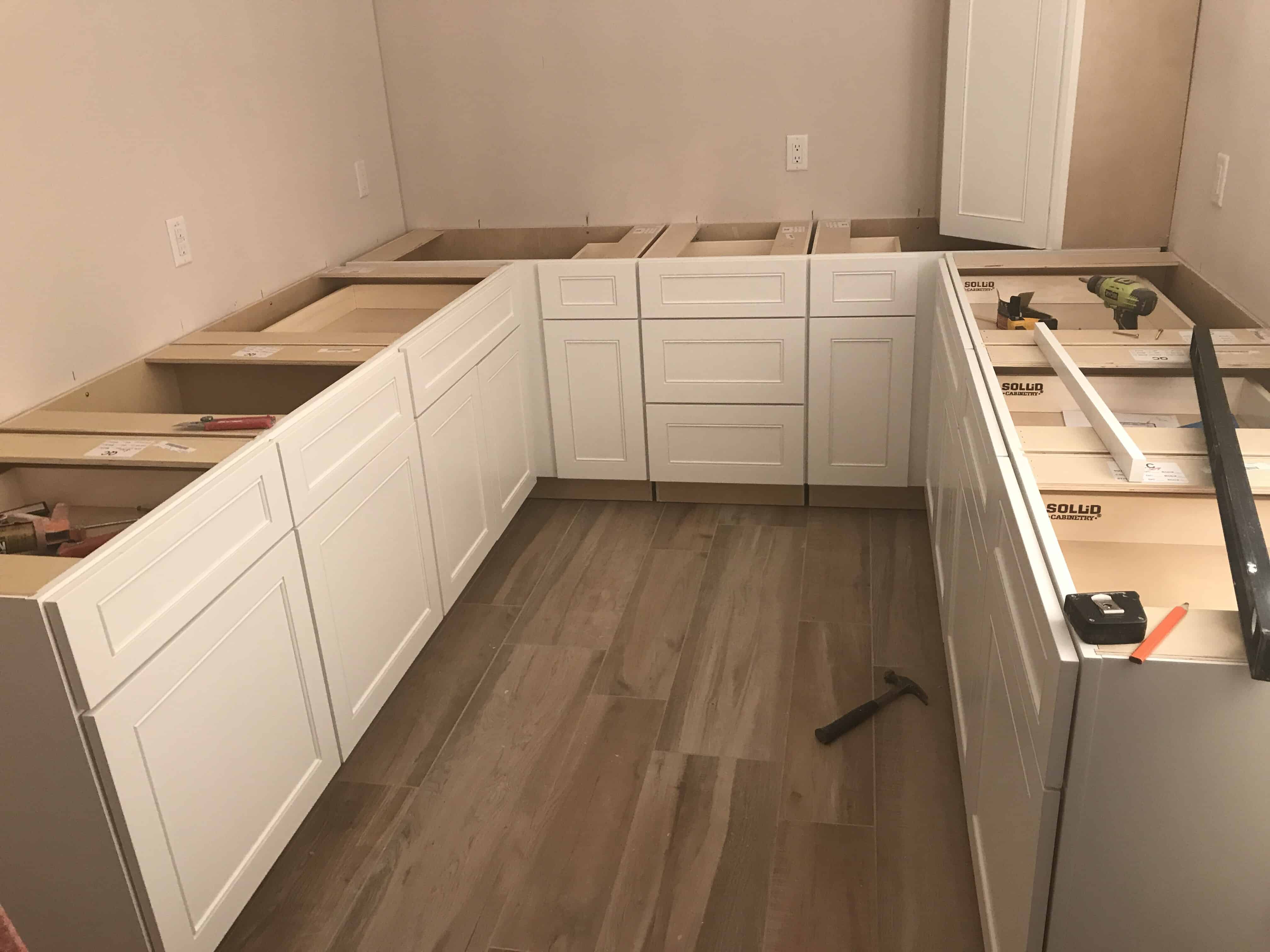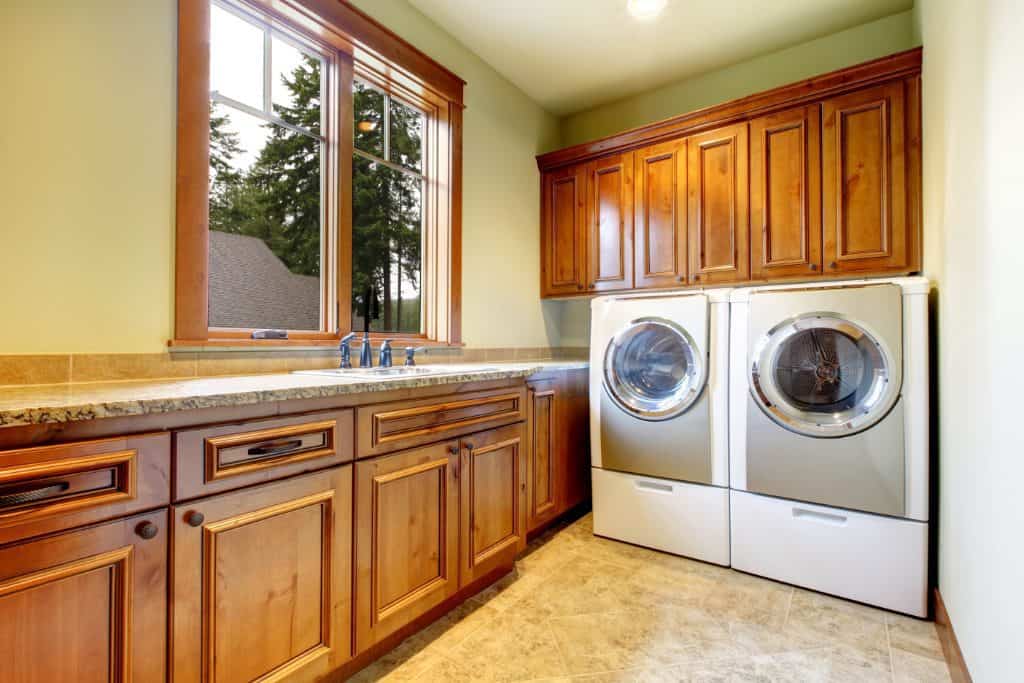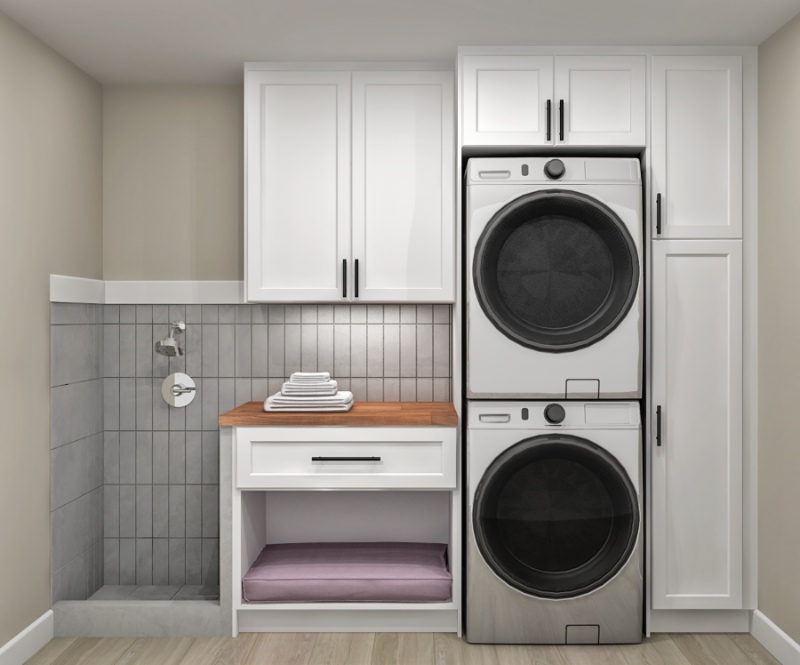Planning and Preparation

Planning and preparation are crucial for a successful laundry room cabinet installation. Taking the time to carefully consider your needs and make informed decisions will ensure a functional and aesthetically pleasing outcome.
Measuring the Laundry Room Space
Accurate measurements are essential for determining the size and placement of your cabinets. Measure the width, depth, and height of the area where you plan to install the cabinets. Consider any obstacles, such as pipes, electrical outlets, or windows, that may affect the cabinet placement.
Creating a Detailed Layout Plan
A detailed layout plan is highly recommended to visualize the arrangement of your laundry room cabinets. It allows you to experiment with different configurations and optimize storage space. Consider factors such as the placement of appliances, the frequency of use for different items, and the overall flow of the laundry room.
Choosing the Right Cabinet Style and Materials
Selecting the right cabinet style and materials is crucial for both functionality and aesthetics. For laundry rooms, durability and moisture resistance are essential considerations. Consider these factors:
- Durability: Choose cabinets made from sturdy materials that can withstand the rigors of daily use, such as solid wood, plywood, or melamine.
- Moisture Resistance: Opt for cabinets with moisture-resistant finishes or materials, such as vinyl-laminate or moisture-resistant plywood.
- Aesthetic Appeal: Select a cabinet style that complements the overall design of your laundry room and matches your personal preferences.
Designing a Cabinet Layout for Maximum Storage
A well-designed cabinet layout maximizes storage space while ensuring easy access to appliances and laundry supplies. Consider these tips:
- Utilize Vertical Space: Maximize vertical space by incorporating tall cabinets, shelves, and drawers.
- Optimize Corner Space: Utilize corner space with corner cabinets or shelves to maximize storage capacity.
- Consider Appliance Placement: Plan the cabinet layout around the placement of appliances, such as the washing machine, dryer, and ironing board.
- Accessibility: Ensure that frequently used items are easily accessible, while less frequently used items can be stored in higher or less accessible areas.
Tools and Materials Checklist
Before you begin the installation process, gather the necessary tools and materials:
- Tools: Level, tape measure, pencil, drill, screwdriver, saw, hammer, safety glasses, and work gloves.
- Materials: Cabinets, cabinet hardware, screws, anchors, wood glue, caulk, and painting supplies (if needed).
Cabinet Installation

Now that your laundry room is prepped and ready, let’s get those cabinets installed! This is where the fun truly begins, so let’s get started.
Assembling the Cabinets
Before you start attaching cabinets to the wall, you’ll need to assemble them. Most cabinets come with clear instructions and all the necessary hardware.
Here’s a general overview of the assembly process:
- Attaching Shelves: Most cabinets come with adjustable shelves. Use the provided hardware to attach the shelf brackets to the cabinet sides, then slide the shelves into place.
- Installing Drawers: Drawers are typically assembled with slides and drawer fronts. Attach the drawer slides to the cabinet sides, then install the drawer box onto the slides. Finally, attach the drawer front using the provided hardware.
- Installing Doors: Cabinet doors usually come with pre-installed hinges. Align the hinges with the cabinet sides and secure them with screws. Ensure the doors open and close smoothly.
Securing Cabinets to the Wall
Once your cabinets are assembled, it’s time to attach them to the wall. This is crucial for stability and safety.
- Locate Studs: Use a stud finder to locate the wall studs. Cabinets should be secured to studs for maximum support.
- Mark and Drill Pilot Holes: Mark the wall where you’ll attach the cabinets, ensuring they are level. Drill pilot holes into the wall at the marked locations to prevent splitting the wood.
- Attach Cabinet to Wall: Use appropriate screws or cabinet-mounting brackets to secure the cabinets to the wall. Ensure the screws are long enough to reach into the stud.
Leveling and Pluming
For a professional look, ensure your cabinets are level and plumb.
- Leveling: Use a level to check that the cabinets are horizontal. Adjust the cabinet position by tightening or loosening the mounting screws as needed.
- Pluming: Ensure the cabinets are vertical using a plumb bob or level. Adjust the cabinet position as needed.
Installing Cabinet Doors and Drawer Fronts
Now that your cabinets are securely attached to the wall, let’s install the doors and drawer fronts.
- Adjusting Hinges: The hinges on cabinet doors often need adjustments for proper alignment. Use a screwdriver to tighten or loosen the hinge screws to fine-tune the door position.
- Installing Handles: Attach the handles or knobs to the doors and drawer fronts using the provided hardware.
Installing a Countertop
For a complete laundry room setup, you’ll need a countertop.
- Measure and Cut: Measure the width of your cabinets and cut the countertop to size. Use a circular saw with a fine-tooth blade for precise cuts.
- Secure the Countertop: Use countertop adhesive and clamps to attach the countertop to the cabinets. Ensure the countertop is level and flush with the cabinet tops.
- Add Support: For extra support, consider adding countertop brackets or cleats to the wall behind the countertop.
Finishing Touches: How To Install Cabinets In Laundry Room

Now that your cabinets are installed, it’s time to add the finishing touches that will make your laundry room truly special! This is where you can unleash your creativity and personalize the space to perfectly reflect your style.
Adding Decorative Touches
To make your cabinets truly stand out, consider adding some decorative touches. Painting or staining the cabinets is a great way to personalize them. You can choose a color that complements your laundry room’s overall aesthetic or go for a bolder statement color.
If you’re looking for a more subtle approach, consider staining the cabinets instead. Staining will enhance the natural grain of the wood, giving your cabinets a warm and rustic look.
Another great way to add personality is by choosing unique hardware. You can find cabinet knobs and pulls in a wide variety of styles, from modern to traditional.
Installing Lighting Fixtures
Proper lighting is essential for a functional laundry room. Installing lighting fixtures within your cabinets will not only improve visibility but also create a more inviting atmosphere.
Consider adding under-cabinet lighting to illuminate your work surfaces. This will make it easier to see what you’re doing when folding laundry or sorting clothes.
You can also install lights inside the cabinets to illuminate the contents. This is especially helpful for those who have a lot of storage in their laundry room.
Adding Cabinet Organizers and Accessories
Maximize storage efficiency by adding cabinet organizers and accessories. These can help you keep your laundry room tidy and organized.
Consider using shelf dividers to separate items and keep them from falling over. You can also use drawer organizers to create compartments for different types of items.
Another great addition is a pull-out hamper. This will make it easier to collect dirty laundry and keep your laundry room looking neat.
Cleaning and Maintaining Laundry Room Cabinets
To ensure the longevity of your laundry room cabinets, regular cleaning and maintenance are essential.
Dust the cabinets regularly with a soft cloth. You can also use a mild cleaner for tougher stains.
Avoid using harsh chemicals or abrasive cleaners, as these can damage the finish of your cabinets.
Designing a Laundry Room with a Cabinet System, How to install cabinets in laundry room
Here’s a layout idea for a laundry room with a cabinet system:
* Appliance Placement: Place your washer and dryer side-by-side against one wall.
* Cabinet System: Install a bank of cabinets along the opposite wall, leaving enough space for a work surface.
* Work Surface: Add a countertop and sink for folding laundry, sorting clothes, and other tasks.
* Storage: Use the cabinets for storing laundry supplies, cleaning products, and other items.
Remember, the key to a successful laundry room is a well-designed storage system that meets your individual needs.
How to install cabinets in laundry room – Installing cabinets in your laundry room can be a great way to maximize storage and organization. If you’re looking for inspiration and guidance, you might find helpful resources like pantry cabinet diy plans , which often feature design ideas that can be adapted for laundry room cabinets.
Whether you’re building from scratch or customizing pre-made cabinets, the same principles of measuring, cutting, and securing apply, ensuring your laundry room becomes a haven of tidiness.
Installing cabinets in a laundry room can be a great way to maximize storage space and create a more organized environment. While functionality is key, you might also want to consider the aesthetic appeal of your laundry room. If you’re drawn to a minimalist and functional style, you could incorporate elements of Swedish style kitchen cabinets into your laundry room design.
These cabinets often feature clean lines, natural materials, and a focus on practicality, which could translate beautifully into a laundry room setting. Regardless of your style preferences, proper installation is crucial for ensuring your cabinets are sturdy and long-lasting.
